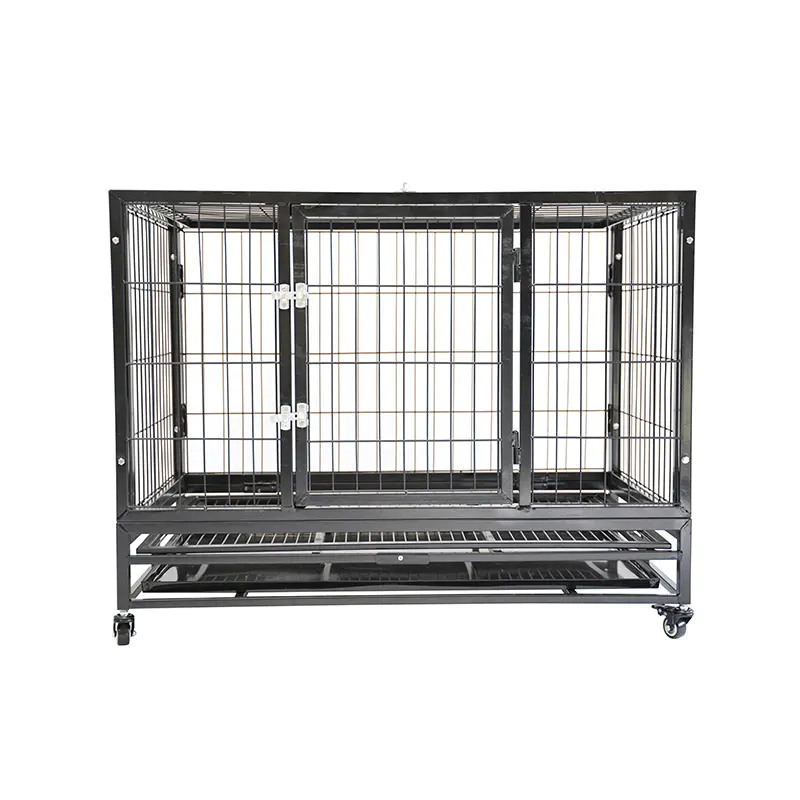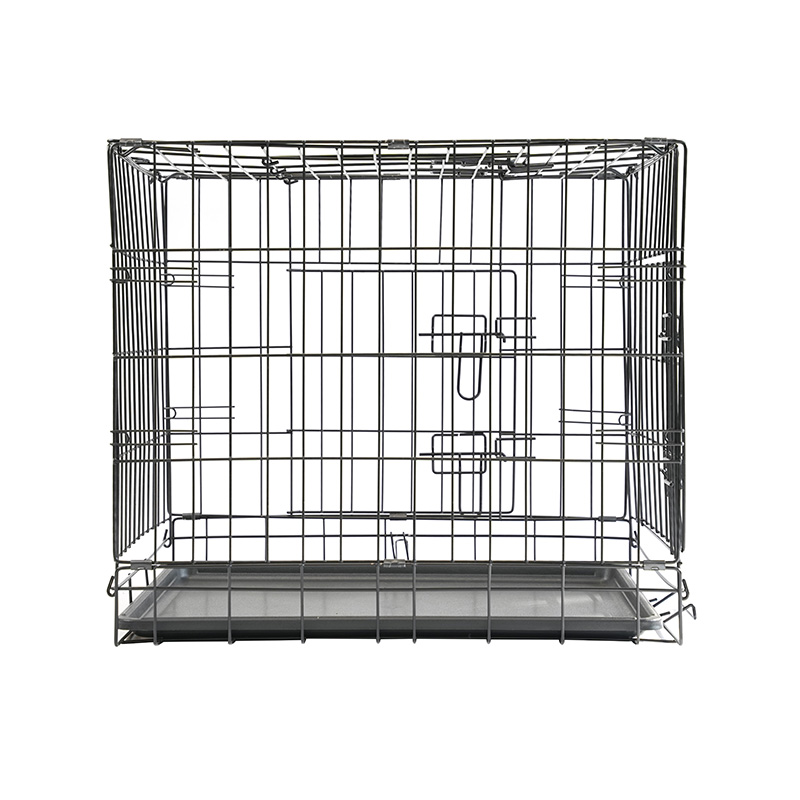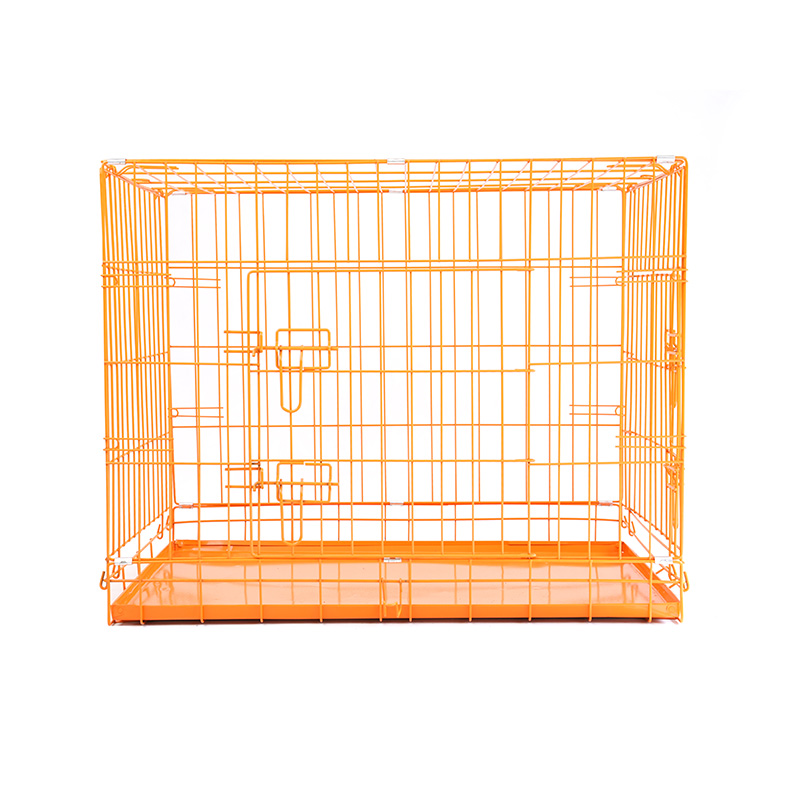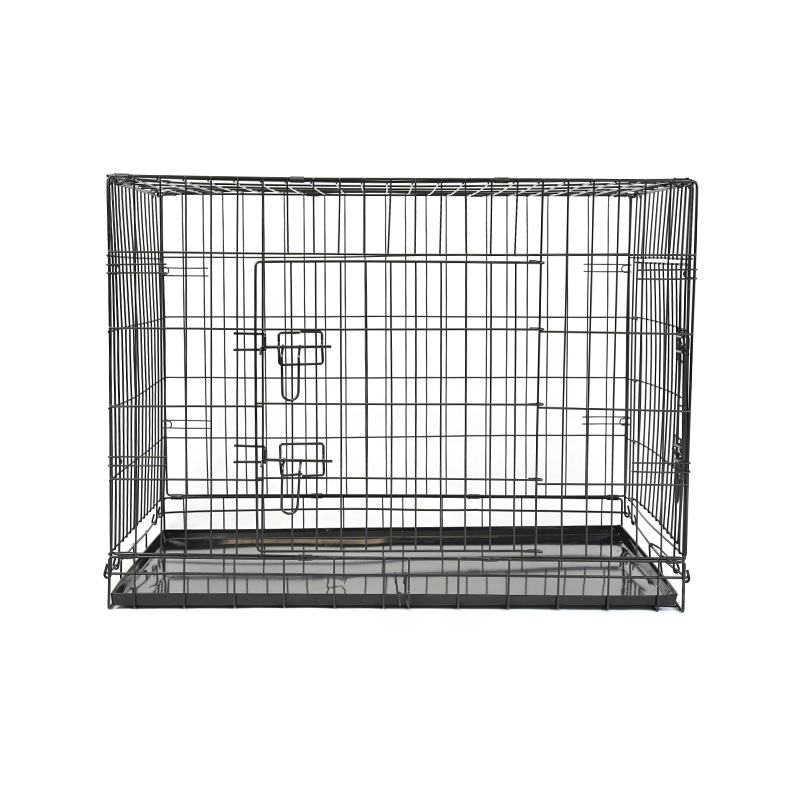- Type:
- Industry News
- Date
- 2025-Jan-16
Side and top ventilation design: the key to the ventilation system of heavy duty dog cage
1. Side ventilation design: ensure all-round air flow
The side is one of the most suitable parts of the heavy duty dog cage for designing ventilation system. Good side ventilation design can ensure that air flows from different directions, avoiding relying on airflow in only one direction, which causes air stagnation in the cage.
1.1 Design vents or grids
The ventilation design of the side can be achieved by setting up multiple vents or grids. The function of these holes or grids is to allow external air to flow into the cage and to allow the waste gas (such as gas produced by dog excrement) in the cage to be discharged in time. The most common practice is to design the side into a mosaic grid, and the size of the grid aperture needs to be adjusted according to the size of the dog. For smaller dogs, the grid spacing should be smaller to avoid the dog's head or paws getting stuck; for large dog breeds, the hole spacing can be appropriately increased to enhance the ventilation effect.
1.2 Shape and layout of side ventilation
In order to maximize the ventilation effect, the layout of the vents or grids can be designed to be a regular arrangement when designing the side, such as horizontal, vertical or staggered. The staggered layout can not only improve the efficiency of air flow, but also avoid airflow in a single direction to ensure uniform air circulation. The vents or grids designed on the side do not have to cover the entire side, but are distributed within a certain height range to work in conjunction with the vents on the top and bottom.
1.3 Safety considerations
The side ventilation design should not only consider the efficiency of air circulation, but also ensure the safety of the dog. The aperture of the grid should not be too large to prevent the dog's head or paws from getting stuck. It is recommended to use strong and durable materials such as stainless steel or galvanized steel mesh, which can not only prevent the dog from destroying the ventilation system, but also avoid rust and extend the service life of the dog cage.
2. Top ventilation design: improve the natural circulation of air
The top ventilation design is essential to keep the air fresh inside the heavy duty dog cage. Because hot air rises, top ventilation can use the principle of natural airflow to help discharge the hot air in the cage and bring more fresh air. A good top ventilation design can effectively regulate the temperature in the cage and prevent the dog from feeling uncomfortable due to the accumulation of hot air in the cage.
2.1 Utilization of natural airflow
The top vents can be designed in a circular, oval or long shape to increase the air flow by expanding the area of the vents. The vents designed on the top need to be adjusted appropriately according to the climate environment. In tropical or subtropical areas, the size of the vents can be appropriately increased during design to enhance the effect of hot air discharge; in cold areas, a moderate vent size can help prevent too much cold air from entering.
2.2 Balance between waterproofing and ventilation
Another important consideration when ventilating the top part is waterproofing. In order to prevent moisture from entering the cage through the vents on rainy days or in humid environments, waterproof mesh or adjustable shielding plates can be used. This can not only effectively block moisture from entering, but also easily adjust the size of the vents when needed to cope with different climate conditions.
2.3 Multi-layer design for top ventilation
In some high-end or customized dog cage designs, a multi-layer top ventilation system can be considered. Designing a double-layer ventilation structure and adding a mesh protective layer next to the upper vents can not only enhance air circulation, but also prevent puppies from entering dangerous areas through large holes. This design can effectively improve ventilation and ensure the safety of dogs.
3. Synergy between side and top ventilation systems
The side and top ventilation systems should work together to achieve the best air circulation effect. By cleverly designing vents in different positions, the smoothness of air flow can be ensured to avoid air stagnation in a certain part. The ideal design is that the side vents bring in fresh air, while the top vents use the rise of hot air to discharge the waste gas and moisture in the cage.
3.1 Balance airflow and temperature
A good ventilation design not only needs to consider the efficiency of air circulation, but also pay attention to temperature regulation. By reasonably arranging the positions of the side and top vents, it can be ensured that the temperature in the cage remains in a suitable range. In summer, multiple top vents and side openings can be designed to promote the flow and heat dissipation of hot air; in winter, the number of vents can be appropriately reduced to reduce the direct entry of cold air and ensure the comfort of dogs.
3.2 Combination of ventilation and privacy protection
Some dogs may prefer a more private space, and an overly exposed ventilation system may make them feel uneasy. In this case, a partially enclosed side or top vent can be designed to achieve a balance between air circulation and privacy protection. The top section can be designed as a semi-enclosed mesh with open vents only on one side, while the sides use a partially blocked mesh design, which allows air circulation without making the dog feel exposed.


 Inquiry
Inquiry

 English
English 中文简体
中文简体 Deutsch
Deutsch





